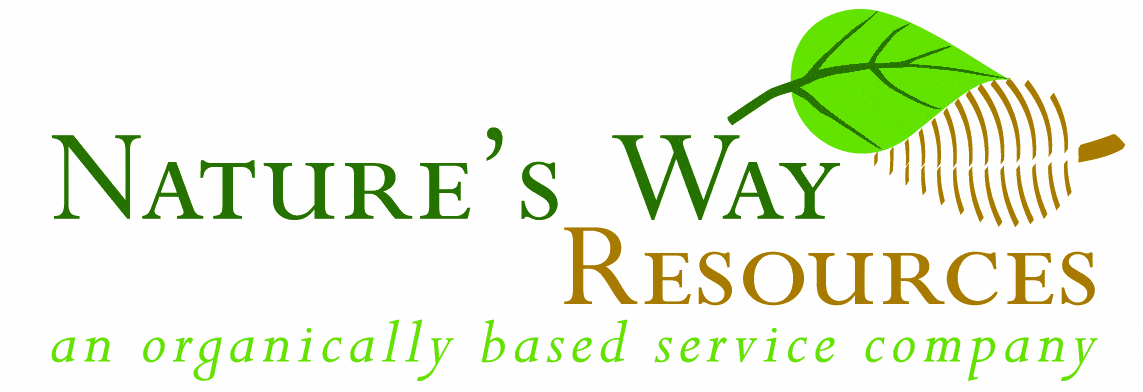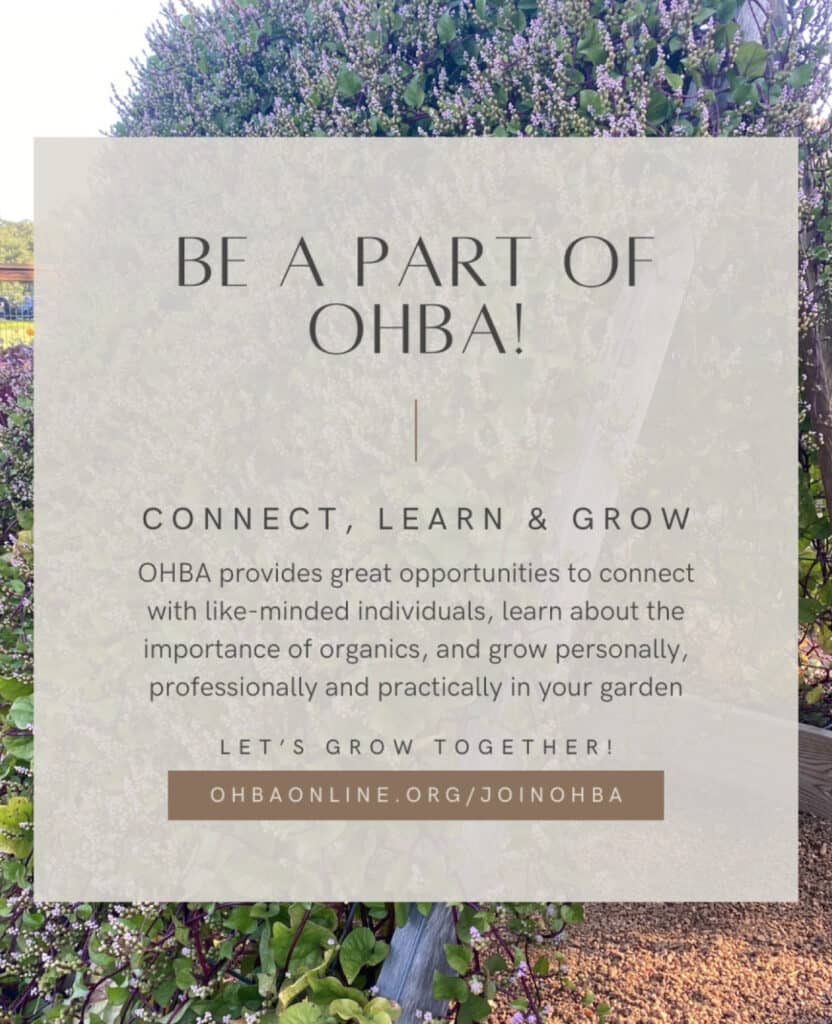 Nature’s Way Resources is proud to produce & email you this free weekly newsletter. We have no ads, but sponsors do graciously help support this project as a public service. Please note their names below & show your gratitude for this free service by patronizing their businesses! To become a sponsor, call (936) 273-1200
Nature’s Way Resources is proud to produce & email you this free weekly newsletter. We have no ads, but sponsors do graciously help support this project as a public service. Please note their names below & show your gratitude for this free service by patronizing their businesses! To become a sponsor, call (936) 273-1200
Nature’s Way Resources owner John Ferguson, “The Lazy Gardener” Brenda Beust Smith and Pablo Hernandez welcome your feedback and are so grateful to the many horticulturists who contribute their expertise
Click here to join our email list
CLICK HERE for PDFs OF PAST LG&F NEWSLETTERS
“A light exists in spring, not present in the year at any other period, when March is scarcely here.”
— Emily Dickinson (1830-1886)
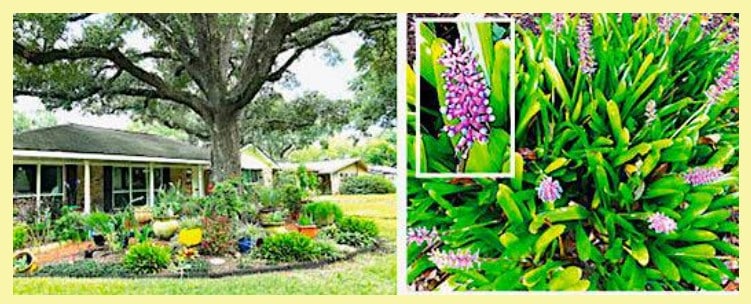
SINCE PLANTING’S ON EVERYONE’S MIND . . .
BY BRENDA BEUST SMITH
Following up on the Planting Under Trees column (Feb. 9, 2024): MARCIA LIVINGSTON in Southwest Houston (above) has been growing ajuga, peacock ginger and matchstick bromeliads under her live oak tree for years. She does cover them if there’s a freeze, but nothing more.
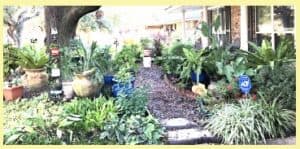 Above right, Matchstick Bromeliads (Aechmea gamosepala), bloom Nov./Dec. and provide green frames for summer bloomers. Their shallow roots don’t bother tree roots in her front yard bed. (Marcia Livingston photos)
Above right, Matchstick Bromeliads (Aechmea gamosepala), bloom Nov./Dec. and provide green frames for summer bloomers. Their shallow roots don’t bother tree roots in her front yard bed. (Marcia Livingston photos)
Marcia does cover them for frosts and our low in 2021 turned many to mush. But many inground and potted plants recovered from the roots to go on blooming, including (all file photos below): curcuma, holly fern, rain lilies, Boston fern, peace lilies and spider plant.

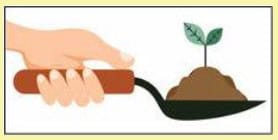 HOW MANY SEEDS WILL YOU WASTE THIS YEAR? I don’t know if this works or not, but it’s interesting enough to share. Most of us purchase & plant seeds on faith, we assume they’re viable.
HOW MANY SEEDS WILL YOU WASTE THIS YEAR? I don’t know if this works or not, but it’s interesting enough to share. Most of us purchase & plant seeds on faith, we assume they’re viable.
Never occurs to “test” seeds before planting!
The Independent seems to think it’s possible with a simple test:
- Wet a paper towel, wring out excess water.
- Fold 5-10 seeds (same type), depending on their size, into towel and place in a zipper-top plastic bag.
- Check in five days and every day afterward for up to three weeks
- Lightly moist towel as needed.
- After a few days passed with no new sprouts, do the math.
- If 7 out of 10 germinate, that’s a 70% germinate rate. So plant 30% more seed than you think you’ll need.
And if none germinate? Maybe try another seed source? Author Jessica Damlano goes into a lot more detail with other suggestions. Might want to start now on testing your fall seeds.

WE’RE SO QUICK TO BLAME THE WEATHER, ETC., when edibles and other plants don’t survive. But, especially with edibles, one problem could be neighbor incompatibility. Beneficial companion plantings have been used for centuries. For example: dill and basil are said to protect tomatoes from hornworms.
But we don’t hear much about incompatible pairings, or an “allopathic effect.” It’s said tomatoes, broccoli, cauliflower or cucumbers in too-close contact may compete too much for the same nutrients. Asparagus is said to pout if too near fennel, garlic, onions or potatoes. Garlic won’t complain, it’s said to dislike growing near asparagus anyway. Onions can inhibit the growth of beans. Google your proposed edibles to see if they have “neighbor druthers”!

NEWS FROM THE WONDERFUL WORLD OF SOIL AND PLANTS # 275
Subject: salts water leaf mold compost greenhouse gasses and gardening
I was talking with a customer the other day about why his plants were stunted and yellowing. It turns out he used a cow manure-based compost. Animal manures are often high in salt which becomes concentrated by the composting process.
Many of our area soils are already high in salt. Using this type of product pushed the soil into salt toxicity, which was harming his plants. High salt levels also kill some of the beneficial bacteria that control fungal pathogens. This is the reason salt is often used in foods as a preservative as it kills bacteria.
Similarly, the spent mushroom substate often sold as mushroom compost is also high in salt and other toxic chemicals.
We often talk about water conservation for many reasons. A paper in the journal Geophysical Research Letters (2023) found that groundwater pumping and moving groundwater has led to the Earth’s rotational axis to shift almost one yard from 1993-2010. While this does not seem like a lot, we have no idea what the consequences are.
Similarly, we have billions of tons of water trapped in glaciers and snow cover at the North and South poles. This huge amount of mass exerts a gravitational pull towards the poles. As the ice and snow melts it will flow and accumulate at the equator due to the Earth’s rotation.
The gravitational pull from this amount of mass will now be towards the equator and away from the poles. I wonder if this change will allow fault zones in our rock formations that were previously firmly locked to slip triggering massive earthquakes.
For those that want more, the journal Nature Reviews Earth & Environment (2023) has a paper just on the effects of irrigation worldwide and how it affects local climate. Irrigation also accounts for 90% of all water usage worldwide.
We as gardeners can be part of the solution by using modern organic methods. Only using organic fertilizers, top dressing our lawns with compost, using native mulches in our flowerbeds, using native and well adapted plants in our landscapes, reducing the amount or better yet, getting rid of turfgrass.
Not only does these newer methods give better results and at lower total cost, they also work to fight climate change, environmental destruction, reduce flooding, and protect wildlife habitat.
A study from the American Society of Agronomy (2023) by researchers at Purdue University found that “Leaf Mold Compost” improved many important soil properties that influence the health and productivity of plants when it is made correctly.
They found that plants that received Leaf Mold Compost produced more tomatoes and had less disease. They also found that the compost helped the survival of beneficial inoculants that can help plants withstand disease pressure.
Note: Nature’s Way Resources has been making Leaf Mold Compost correctly for 30 years! A gardener in the Houston area does not have to settle for a cheap knockoff if you want the most benefits and best results.
We hear a lot about climate change and global warming in the news, and I often get asked about it. But what does it all mean and how do different gasses compare and is it important to gardeners?
Greenhouse gasses like carbon dioxide (CO2), methane (CH4), and nitrous oxide (N2O) have greatly different effects on the atmosphere. Scientists at the Intergovernmental Panel on Climate Change created a unit of measurement called the Global Warming Potential (GWP) so people can easily compare the effects of different greenhouse gases. The larger the GWP the more the gas warms the Earth.
Carbon dioxide (CO2) is used as the reference gas and is assigned a GWP of 1. Methane (CH4) has a value of 29.8 and nitrous oxide (N2O) has a value of 273.
In other words, one molecule of nitrous oxide has the same effect as 273 molecules of carbon dioxide! Journal of Environmental Quality (2023)
Where does nitrous oxide (N2O) come from? A couple of very large sources are from the use of artificial fertilizers and feedlots.
Plants are not designed to absorb nitrogen (N) that has been dissolved in water. Much of the nitrogen escapes to the atmosphere as nitrous oxide and more runs off as nitrate and pollutes our waterways. This is why one must use an artificial fertilizer 4-5 times per year to give the same results as an organic fertilizer once or twice a year.
When cattle are fed grain in a feedlot, they produce a lot of methane. However, when they are raised on grass (grass fed) they do not produce the methane. New studies have shown the action on their hooves pushing grass, manure, and other organic material in the soil actually helps store carbon in the soil forming humus, reducing the greenhouse effects. Think of the millions of head of buffalo that created the great fertile soils of the great plains.
So, as a gardener when we use modern biological methods (sometimes called organic) we get better results, at lower cost, and we reduce greenhouse gases. Similarly, when we purchase grass fed beef (which is healthier for us), we become part of the solution.
I started off today’s column by talking about damage to plants by using manure-based compost. Where does the manure come from…. feedlots. Hence when we purchase a product like that, not only are we hurting our gardens, we are encouraging the environmental damage.
SPONSORSHIP
If you are interested in becoming a sponsor, please contact us at 936-273-1200 or send an e-mail to: lazygardenerandfriends@gmail.com
ABOUT US
BRENDA BEUST SMITH WE KNOW HER BEST AS THE LAZY GARDENER . . . but Brenda Beust Smith is also:
- a national award-winning writer & editor
- a nationally-published writer & photographer
- a national horticultural speaker
- a former Houston Chronicle reporter
When the Chronicle discontinued Brenda’s 45-year-old Lazy Gardener” print column — started in the early ’70s as a fun side-project to reporting, it then ranked as the longestrunning, continuously-published local newspaper column in the Greater Houston area. The name, she says, is not just fun, it’s true. Brenda’s gradual sideways step from reporter into gardening writing led first to an 18-year series of when-to-do-what Lazy Gardener Calendars, then to her Lazy Gardener’s Guide book which morphed into her Lazy Gardener’s Guide on CD, which she now emails free upon request. Brenda became a Harris County Master Gardener and, over the years, served on theboards of many Greater Houston area horticulture organizations. She hosted local radio and TV shows, most notably a 10+-year Lazy Gardener specialty shows on HoustonPBS (Ch. 8) and her call-in “EcoGardening” show on KPFT-FM. For over three decades, Brenda served as Assistant Production Manager of the GARDEN CLUB OF AMERICA’S “BULLETIN” magazine. Although still an active broad-based freelance writer, Brenda’s main focus now is THE LAZY GARDENER & FRIENDS HOUSTON GARDEN NEWSLETTER with John Ferguson and Pablo Hernandez of Nature’s Way Resources. A native of New Orleans and graduate of St. Agnes Academy and the University of Houston, Brenda lives in Humble, TX, and is married to the retired Aldine High School Coach Bill Smith. They have one son, Blake. Regarding this newsletter, Brenda is the lead writer, originator of it and the daily inspiration for it. We so appreciate the way she has made gardening such a fun way to celebrate life together for such a long time.
JOHN FERGUSON John is a native Houstonian and has over 27 years of business experience. He owns Nature’s Way Resources, a composting company that specializes in high quality compost, mulch, and soil mixes. He holds a MS degree in Physics and Geology and is a licensed Soil Scientist in Texas. John has won many awards in horticulture and environmental issues. He represents the composting industry on the Houston-Galveston Area Council for solid waste. His personal garden has been featured in several horticultural books and “Better Homes and Gardens” magazine. His business has been recognized in the Wall Street Journal for the quality and value of their products. He is a member of the Physics Honor Society and many other professional societies. John is is the co-author of the book Organic Management for the Professional. For this newsletter, John contributes articles regularly and is responsible for publishing it.
PABLO HERNANDEZ Pablo Hernandez is the special projects coordinator for Nature’s Way Resources. His realm of responsibilities include: serving as a webmaster, IT support, technical problem solving/troubleshooting, metrics management and quality control. Pablo helps this newsletter happen from a technical support standpoint.
Download the Newsletter with Our Events Calendar Below!
